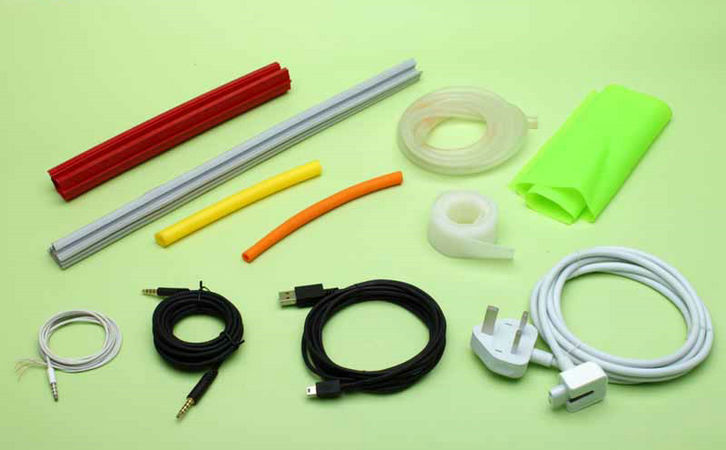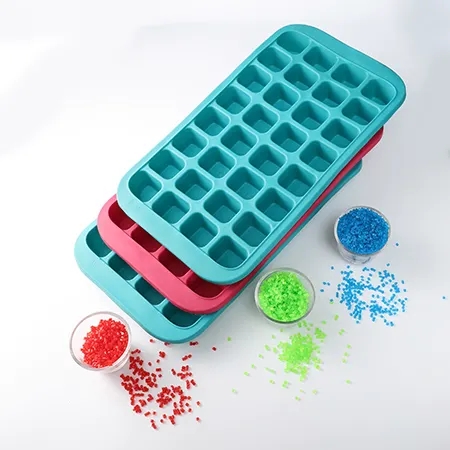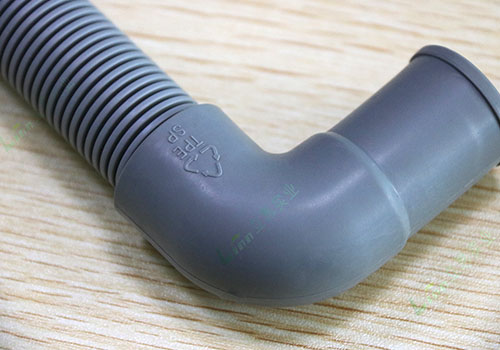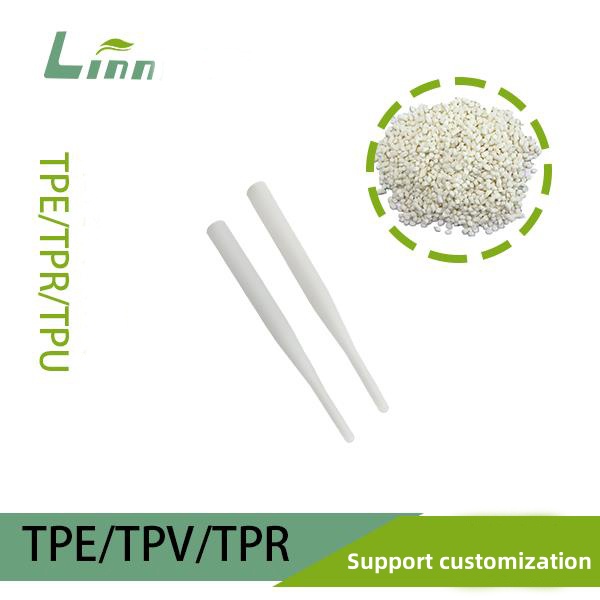As someone who has worked in the processing of TPE (Thermoplastic Elastomer) materials for years, I’m no stranger to the various challenges that arise during production. One issue that frequently frustrates injection molding engineers is sink marks at the gate. Those tiny depressions on the product’s surface near the gate can drive anyone up the wall—especially when you’ve meticulously designed the mold and tweaked the process parameters countless times. If you’re facing this problem, don’t worry. In this article, I’ll draw on my experience to break down the causes of gate sink marks and share practical, step-by-step solutions to help you tackle this issue effectively.

Why Do Sink Marks Appear at the Gate?
In injection molding, sink marks at the gate typically manifest as slight depressions or shrinkage marks near the gate area on the molded part’s surface. These defects not only compromise the product’s appearance but can also affect functionality in high-precision applications. From my observations, gate sink marks are often tied to the following factors:
Material Properties: TPE materials are highly elastic, with low modulus and significant shrinkage rates, making them prone to volume contraction during cooling.
Mold Design: Improper gate size, location, or venting can lead to poor melt flow or insufficient localized pressure.
Process Parameters: Incorrect settings for injection temperature, pressure, or cooling time can cause uneven material shrinkage.
Equipment Factors: Issues like low machine precision or inadequate clamping force can indirectly contribute to defects.
Understanding these root causes is the first step toward finding solutions. In the sections below, I’ll dive into three key areas—mold optimization, process adjustments, and material selection—to guide you through addressing gate sink marks.

Three Key Strategies to Eliminate Gate Sink Marks
1. Optimize Mold Design
The mold is the heart of injection molding, and many gate sink mark issues stem from mold design flaws. Here are some critical areas to focus on:
Adjust Gate Size and Location
A gate that’s too small increases flow resistance, leading to insufficient pressure and sink marks, while an overly large gate can cause uneven cooling. Based on product wall thickness and material flowability, I recommend designing gate diameters between 0.8-2.0mm. The gate should ideally be positioned near thicker sections of the part to avoid thin-walled areas where pressure loss is more likely.
Enhance Venting Design
Poor venting traps air in the mold cavity, hindering melt filling and contributing to sink marks. Adding vent slots near the gate, with depths of 0.01-0.03mm, can ensure smooth air escape without causing flash.
Improve Cooling System
Uneven mold cooling is a common culprit behind sink marks. Adding or repositioning cooling channels near the gate area can promote uniform cooling. I once worked with a client who resolved sink mark issues by incorporating an additional cooling circuit near the gate, significantly improving part quality.
Here’s a reference table for mold optimization parameters:
|
Optimization Area |
Recommended Parameters |
Notes |
|---|---|---|
|
Gate Diameter |
0.8-2.0mm |
Adjust based on wall thickness and flow |
|
Vent Slot Depth |
0.01-0.03mm |
Avoid excessive depth to prevent flash |
|
Cooling Channel Spacing |
8-12mm |
Ensure even cooling, avoid hot spots |
2. Fine-Tune Injection Molding Parameters
Process parameters are critical to achieving high-quality TPE parts. To address gate sink marks, I typically focus on the following adjustments:
Increase Holding Pressure and Time
The holding phase compensates for material shrinkage, preventing sink marks. For TPE, I recommend a holding pressure of 50-80% of the injection pressure and a holding time of 2-5 seconds, depending on part thickness. Be cautious, as excessive holding pressure can cause flash or mold deformation, so iterative testing is key.
Optimize Injection Temperature
TPE melt temperatures typically range from 180-230°C. If the temperature is too low, poor flowability can lead to incomplete filling; if too high, material degradation may increase shrinkage. Refer to the material supplier’s Technical Data Sheet (TDS) for recommended temperature ranges and fine-tune based on actual production.

Control Cooling Time
Insufficient cooling time can result in premature ejection, causing uneven shrinkage, while overly long cooling reduces efficiency. For TPE, cooling times of 10-30 seconds are generally appropriate, depending on part thickness and mold cooling efficiency.
Here’s a table summarizing process parameter adjustments:
|
Parameter |
Recommended Range |
Adjustment Direction |
|---|---|---|
|
Injection Temperature |
180-230°C |
Increase to improve flow, reduce shrinkage |
|
Holding Pressure |
50-80% of injection pressure |
Increase to compensate for shrinkage |
|
Holding Time |
2-5 seconds |
Extend to minimize sink marks |
|
Cooling Time |
10-30 seconds |
Ensure sufficient cooling before ejection |
3. Select the Right TPE Material
TPE materials vary widely in shrinkage, flowability, and processing characteristics. If gate sink marks persist, revisiting material selection can make a significant difference:
Choose Low-Shrinkage Materials
Some high-performance TPE grades are modified (e.g., with fillers) to reduce shrinkage, making them ideal for appearance-critical parts. Look for materials with shrinkage rates of 0.5-1.5%, and consult suppliers for suitable options.
Improve Material Flowability
Materials with better flowability fill molds more effectively, reducing sink marks. Opt for TPE grades with lower molecular weight or higher Melt Flow Index (MFI), ideally in the range of 10-50g/10min (tested at 190°C, 2.16kg).
Implement Preheating
Preheating TPE pellets at 60-80°C for 2-4 hours before molding removes moisture and enhances material uniformity, indirectly reducing sink marks.
In one case, I helped a client switch to a low-shrinkage TPE grade and introduced preheating, which reduced sink marks by 80%. This experience underscored the importance of aligning material properties with process optimization.

Real-World Case Study: From Persistent Failures to Success
A few years ago, a client approached me with a problem: their TPE soft phone cases consistently showed slight sink marks near the gate, compromising aesthetics. Despite multiple attempts to adjust parameters, the issue persisted. After visiting their facility, I implemented the following changes:
Mold Review: The gate was too small (0.5mm) and venting was inadequate. I recommended enlarging the gate to 1.2mm and adding 0.02mm-deep vent slots around the cavity.
Process Adjustments: Increased holding pressure from 40MPa to 60MPa, extended holding time to 4 seconds, and raised injection temperature from 190°C to 210°C.
Material Upgrade: Switched to a higher-MFI TPE (from 15g/10min to 30g/10min) and introduced a 2-hour preheating step.
These changes eliminated the sink marks entirely, boosting the product’s pass rate from 85% to 98%. This case taught me that addressing gate sink marks requires a holistic approach—focusing on one aspect alone rarely suffices.
Proactive Measures to Prevent Gate Sink Marks
Beyond troubleshooting, adopting preventive practices in daily production can minimize the likelihood of sink marks:
Regular Mold Maintenance: Mold surfaces can wear or accumulate residues over time. Clean and inspect molds every 3-6 months to ensure optimal performance.
Monitor Equipment Condition: Verify that the injection molding machine maintains stable clamping force and injection pressure to avoid parameter fluctuations.
Maintain Process Records: Document parameters and defect patterns for each production batch to facilitate future analysis and optimization.
Train Operators: Equip workers with knowledge of TPE material properties and process adjustments to reduce errors.

Frequently Asked Questions
To provide a well-rounded resource, I’ve compiled answers to common questions about gate sink marks:
Q1: How do sink marks at the gate differ from general shrinkage?
A: Gate sink marks are localized near the gate, often due to insufficient pressure or uneven cooling, while general shrinkage can occur anywhere on the part, typically linked to high material shrinkage or inadequate holding pressure. Focus on gate design and holding parameters to address sink marks.
Q2: Will extending holding time hurt production efficiency?
A: It may slightly increase cycle time, but optimizing cooling and injection speed can offset this. In practice, adding 1-2 seconds to holding time usually has minimal impact on throughput.
Q3: Does switching TPE materials increase costs significantly?
A: High-performance TPEs may cost more, but reduced scrap rates and improved consistency often lower overall expenses. Request small-batch samples from suppliers for testing.
Q4: How can I tell if sink marks are caused by mold or process issues?
A: Use a systematic approach. First, fix process parameters and inspect mold design (gate size, venting, etc.). If the mold checks out, tweak parameters like holding pressure or temperature. Mold flow analysis tools like Moldflow can also help diagnose the issue.
Final Thoughts
Gate sink marks may be a common headache in TPE injection molding, but with thoughtful mold design, process tweaks, and material choices, they’re entirely manageable. As someone who’s navigated these challenges firsthand, I know how rewarding it feels to turn a frustrating defect into a solved problem. I hope this guide equips you with practical strategies to conquer gate sink marks and streamline your production. If you have more questions or need tailored advice, feel free to reach out—I’m here to help!





